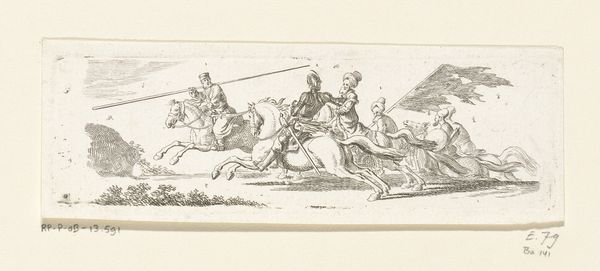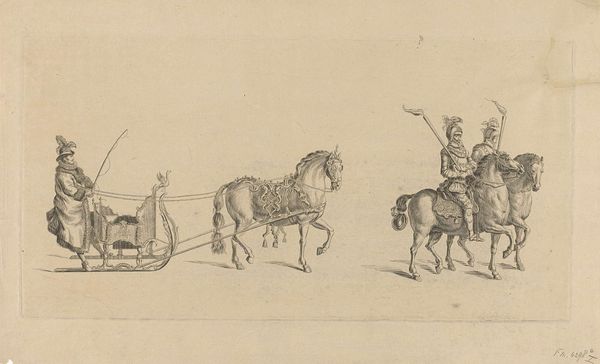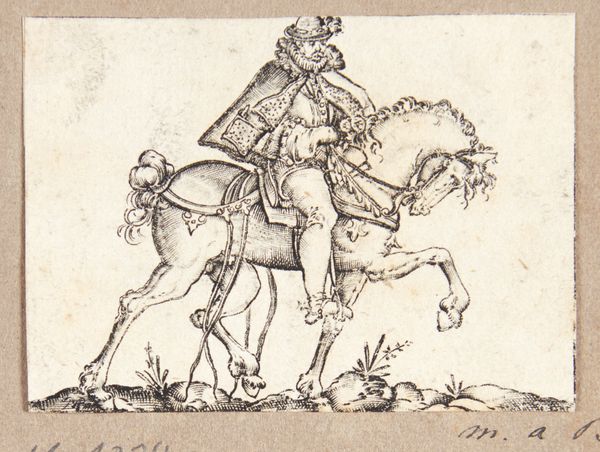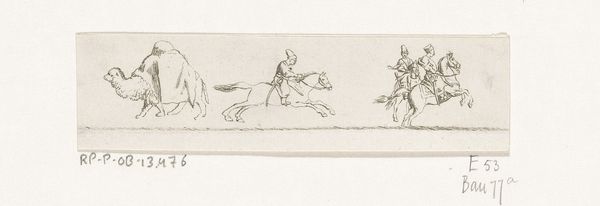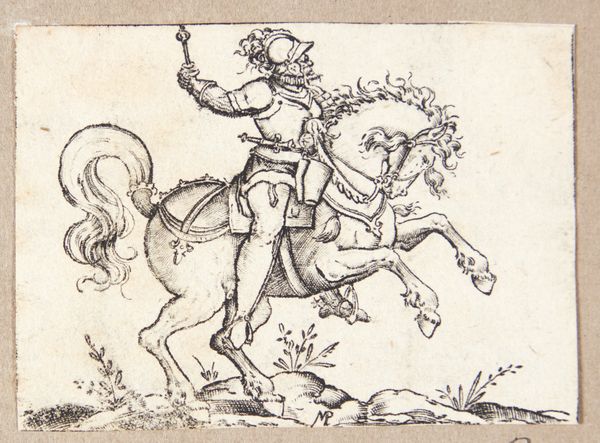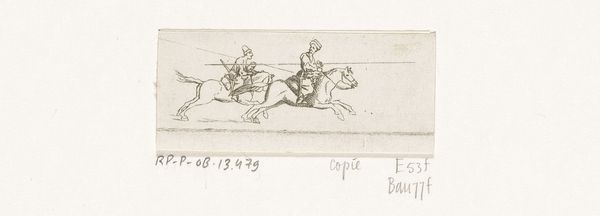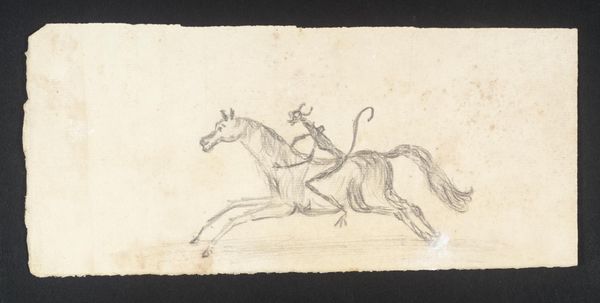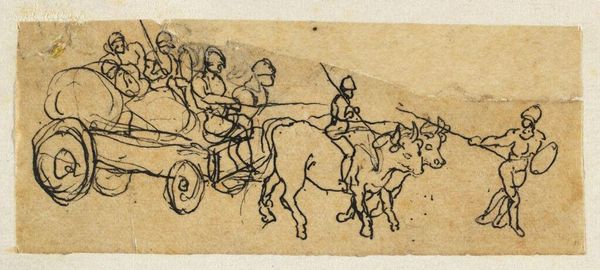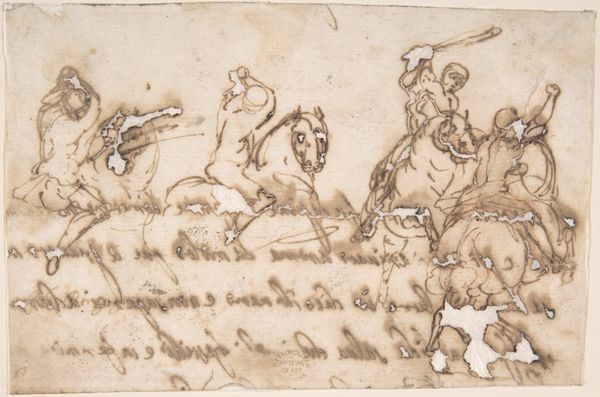
drawing, paper, pen
#
drawing
#
narrative-art
#
landscape
#
figuration
#
paper
#
line
#
pen
#
genre-painting
#
history-painting
#
academic-art
Dimensions: height 21 mm, width 63 mm
Copyright: Rijks Museum: Open Domain
Editor: Here we have Daniel Chodowiecki's "Two Galloping Cossacks with Lances," a pen and ink drawing on paper from 1769. The figures seem to race across the page. What do you see in this piece? Curator: Beyond the surface depiction, I see a fascinating glimpse into the cultural imagination surrounding the Cossacks at that time. Notice the artist's choice to render them in mid-gallop. Does this suggest an idealized vision of freedom and speed, attributes often associated with Cossack identity? Editor: So you’re saying it’s less about a realistic portrayal, and more about representing ideas about the Cossacks? Curator: Precisely. Consider the lance. It isn’t just a weapon. It's a symbol of power, skill, and a very particular cultural memory. In 1769, what did the image of a Cossack represent to the people viewing this artwork? What anxieties or aspirations did it evoke? Think about the political landscape and cultural trends of that era. What do you think? Editor: I guess they could have been seen as both threatening and romantic figures, maybe symbols of rebellion and independence against empires. I never considered how the image itself could hold so much cultural weight. Curator: Indeed. Images are rarely neutral. Chodowiecki, through line and form, consciously or unconsciously, tapped into a reservoir of pre-existing cultural meanings. We carry generations of assumptions that surface in visual codes. Editor: I hadn't thought about it that way before; how symbols within art accumulate meaning over time. Curator: Understanding those accumulated layers is essential. The lances, the horses, the galloping—they all speak to a deeper cultural narrative. It makes you wonder, doesn't it, what meanings we unknowingly imbue in the images we create today?
Comments
No comments
Be the first to comment and join the conversation on the ultimate creative platform.

